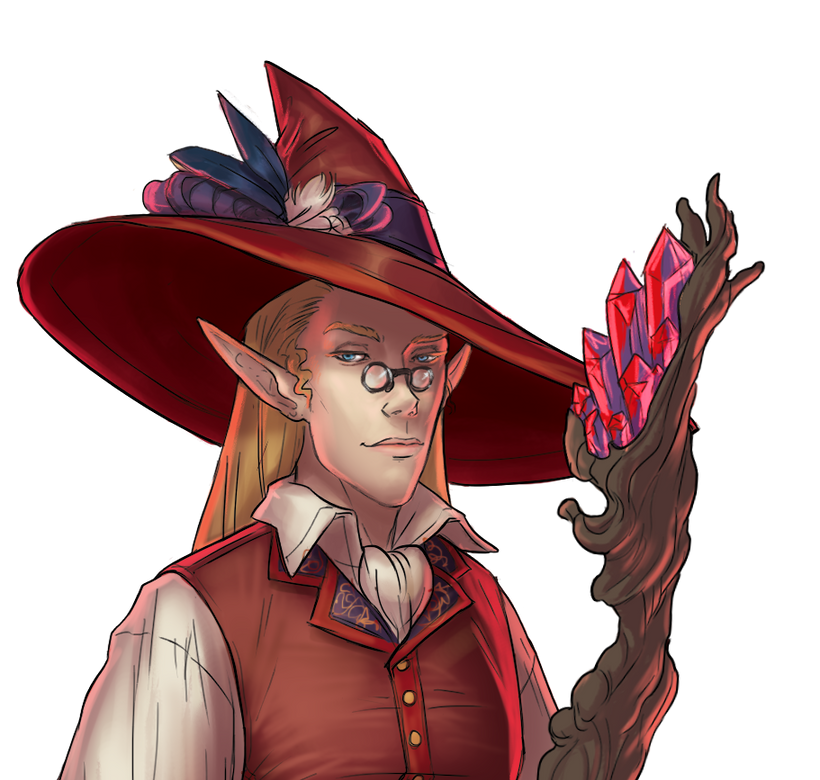With a full 50% of the vote, this week’s entry is Trollsong! This was another really great example of how the Gazetteer writing prompts produce really fun stuff. The first reference for “trollsong” was an off-the-cuff bit of improvization and a minor detail–so minor that I don’t even remember where it first appeared.
Then it kept getting referenced in other entries, kept accruing details, and got more and more stuff attributed to it. By the time I actually got to write the entry, trollsong had already bound together wildly disparate parts of the setting. I borrowed heavily from indigenous Australians’ tradition of songlines, which I like to think brought all of these references together in a really juicy, interesting, and fun way.
Here’s the entry:
—
TROLLSONG
For millennia, trollish culture has been transmitted across the generations through song. Using eight common melodies and a host of soft rules for format and content, trollsong has safeguarded the information of an entire culture and spread that knowledge far beyond the trollish people. Today nearly every adult in the West, troll or otherwise, recognizes trollsong melodies and can sing along with a score or more individual songs.
Trollsong has a number of different functions, most notably disseminating culture, documenting travel routes, and preserving historical accounts. No individual song does just one of these: a route description might transition into a recipe using the plants that can be harvested along the path, then tell a short parable about hospitality, and then continue describing the route.
The geographic information encoded into trollsong is one of the format’s most well-known features. Different trollsongs describe the route between different places of importance, describing the landscape encountered, the dangers to look out for, and the traditional gifts and demonstrations of respect to furnish the locals. The distances described by trollsong are impressive: the longest recount the landscape encountered from troll homelands all the way to the Kharzan range and Mergather Gulf.
Many trollsongs are sung by the communities that they describe, troll or otherwise. Each portion is sung in the native tongue of that community, thus binding together both nearby and far-flung neighbors. Where these communities have significantly changed over the course of centuries, concerted efforts have often been employed to teach the new residents their part in the trollsong. Following a trollsong may bring travellers to a town of renardi who still sing the old melodies taught to their grandparents by departing trolls.
Trollsong also comprises the oldest surviving historical accounts known to the speaking peoples. By compiling the references in fifty-six of the oldest known trollsongs, the Bardic College reconstructed detailed timelines of the ancient empires that once dominated the West and had been thought lost to time. There were, startlingly, no contradictions between the three score trollsongs. These accounts also document the use of bodysculpting in those empires, centuries before Mysterium scholars believed the techniques had been developed.
Trollsong is trusted almost implicitly for historical accuracy, so much so it has actually toppled crowns. The despotic king of Yonishan had maintained power by insisting that goblins had always ruled there—until the rediscovery of a lost trollsong recounted the original settlement of the caverns. His regime collapsed and the former king fled in the night to escape reprisals.
New trollsongs continue to be composed, especially since the form’s recurrent melodies make trollsong familiar and easily transmissible. Across the West, troll composers are commissioned to create new songs to commemorate significant events or to shore up flagging reputations, in the hopes that the new song with catch popular appeal. There are at least three renditions of the founding of Tallus, each one financed to bolster (and embellish) the reputation of one of the city’s ruling houses.
—
When I compile all these entries for the Cortex Creator Studio, I’ll be adding little bits of rules and ways to incorporate the setting elements into a Cortex game. I can already see characters digging up a pertinent trollsong for their travels, creating an asset for their sheet with a test. And then for the rest of that session, the Bard can be all, “well, according to the Long Path to the Gulf lyrics, there should be an oasis up ahead…” and all sorts of fun stuff.
But that is the distant future. Let’s talk about the immediate future, namely next week and the entry we’ll check out then. Which one strikes your fancy?
And lastly, thanks so much for your support, folks!
—Josh
(Ack, I mispelled ‘Mergather Gulf’ in the poll and now I can’t change it! 🙁 )
